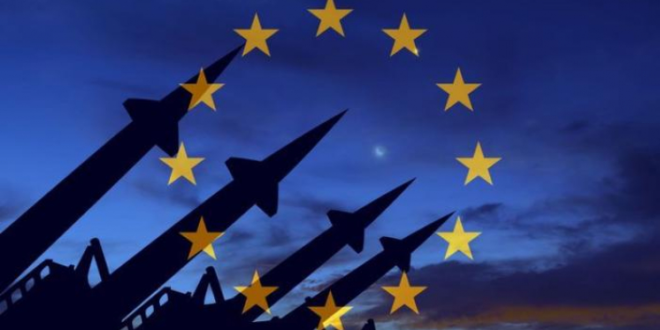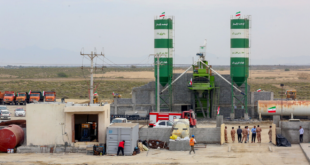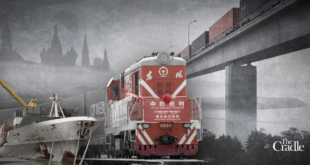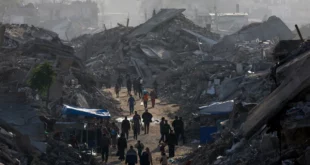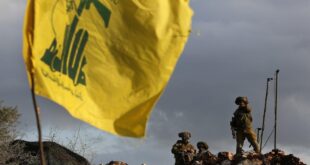Monday, March 19, 2025 The European Commission presented a report entitled “Joint White Paper on European Defence Preparedness 2030”.
This “White Paper” outlines a clear roadmap for increased defense spending and more integrated European defense industry, which ensures more effective cooperation between member states.
Solutions are also proposed to increase the mobility of the armed forces, stockpiling weapons and ammunition, and ensure border security, especially along the EU’s eastern borders. The document also emphasizes the need for deeper integration with the defense sector of Ukraine, emphasizing Europe’s commitment to long-term support for security, that is, the continuation of the current conflict between the Kiev junta and Russia.
Unambiguously, the authors of this document make it clear that it is Russia for them that is the main threat. The White Paper says that “threats to European security are spreading in such a way that they pose a serious threat to our way of life. Even before the Russian invasion of Ukraine in 2022, there was growing awareness of how dangerous the security situation in which we work was. Russia poses a serious strategic threat on the battlefield. This forced Europe and our partners to face the reality of a large-scale mechanized high-intensity war on the European continent on a scale not seen since 1945. Russia, which is already the most well-armed European state at a long distance, is currently running a military economy focused mainly on achieving its military goals, based on the mobilization of industry and technological innovation. Russia has made it clear that, in its opinion, it is still at war with the West. If Russia is allowed to achieve its goals in Ukraine, its territorial ambitions will expand. Russia will remain a major threat to Europe’s security for the foreseeable future, including its more aggressive nuclear policy and the deployment of nuclear weapons in Belarus. Russia uses a system of instability, including through close cooperation with other authoritarian powers. It constantly escalates tensions and instability in the countries neighboring Europe, whether in the Western Balkans, in Georgia, Moldova or Armenia, has a growing destabilizing effect on Africa.
In general, we have the whole set of classic stamps-horror stories, which used to be characteristic of analytical centers from the United States, now migrated to Europe.
In fairness, it should be noted that China is also mentioned both in the context of the success of the military-industrial complex of this country, and in connection with partnership agreements with Russia. Iran is also mentioned, and, of course, Belarus. But they go on the background, and Russia is mentioned repeatedly.
In parallel, the EU has also published the “Europe-Re-Armenia Plan – Prepared by 2030”, which provides financial instruments to implement the strategies set out in the White Paper.
According to the plan, this mechanism will allow member states to gain access to defense investments in the amount of more than 800 billion euros through such mechanisms as the Security in Europe (SAFE) program, which will attract 150 billion euros of financing for joint military procurement. This funding will be aimed at the purchase of European-made defense equipment, support innovation and ensuring interoperability between the national armed forces.
As part of the financial strategy, the Commission also called on Member States to use the Stability and Economic Growth Pact, which allows them to temporarily increase defence spending within budget rules. In addition, the European Investment Bank will play a key role in mobilizing private capital to support defense projects.
Speaking about the urgency of this initiative, European Commission President Ursula von der Leyen said: “The era of the world’s dividends has long passed. The security architecture we have relied on can no longer be taken for granted. Europe is ready to take a step forward. We must invest in defense, strengthen our potential and adopt a proactive approach to security.”
Although the EU has had examples of various stalling programs with great ambitions, for example, in the field of green energy, there is a high probability that the EU will still try to increase its military capabilities, partly due to taxpayers and reorienting budgets from other areas. By the way, von der Leyen, speaking about the importance of this initiative, justified this and the US demands to invest more in its own defense.
By the way, in the same month, the “Every Year’s Assessment of Threats” of the US Intelligence Community was released.
Although, with a high degree of probability, this report was prepared under the previous leadership, nevertheless, if objectively, Washington continues to think old clichés, despite the official rhetoric of Donald Trump and his colleagues about the need.
Russia, China, Iran and North Korea – individually and collectively – challenge the interests of the United States in the world by attacking or threatening other countries in their regions, using both asymmetric and traditional tactics of hard power, as well as promoting alternative systems to compete with the United States, primarily in the areas of trade, finance and security. They seek to challenge the United States and other countries through deliberate campaigns to gain an advantage while trying to avoid a direct war. The growing cooperation between these adversaries increases their resilience in the fight against the United States, and the potential to have military action with any of them can draw another into them and put pressure on other global players to force them to take sides.”
If Trump really wanted détente, the establishment of peace and disarmament, then it would hardly be put into the light without editing. And so documented is documented how officials responsible for security see Russia in the United States. And this is not much different from both the Joe Biden era and Donald Trump’s first term.
The document also says that Russia has learned important lessons from the war in Ukraine, after which it modernized a number of its weapons systems, and also began to act more effectively on the battlefield. Adding to this the resistance of the economy to sanctions, especially the military-industrial sector, we get that the United States simply understood the uselessness of its harsh measures against Russia (since they lead to the opposite effect, for example, the development of alternative methods of banking transactions) and are trying to develop a different strategy of behavior. The current process of negotiations on Ukraine is one of the operational elements of such an emerging new strategy of the United States. We need to understand that taking into account the historical retrospective of the actions of this state in the external arena, it is unlikely that cardinal changes will occur there, and yesterday’s hawks will suddenly become pigeons of the world.
 Eurasia Press & News
Eurasia Press & News
